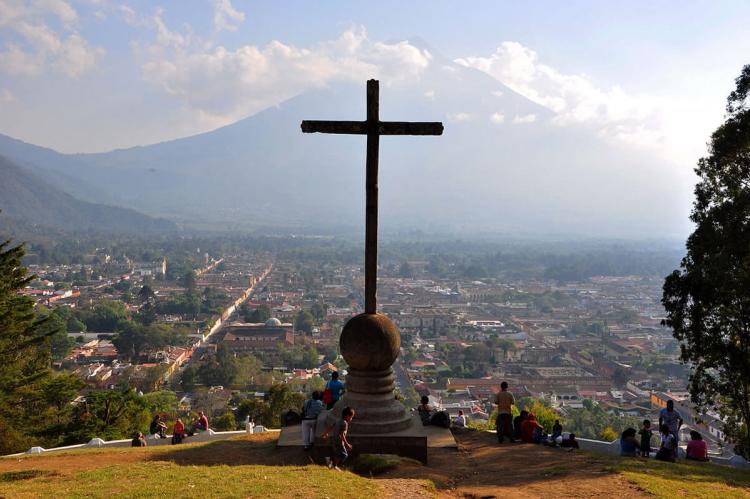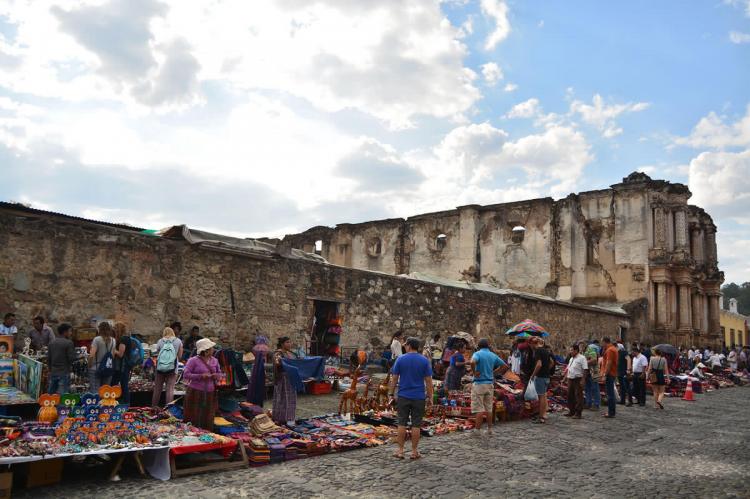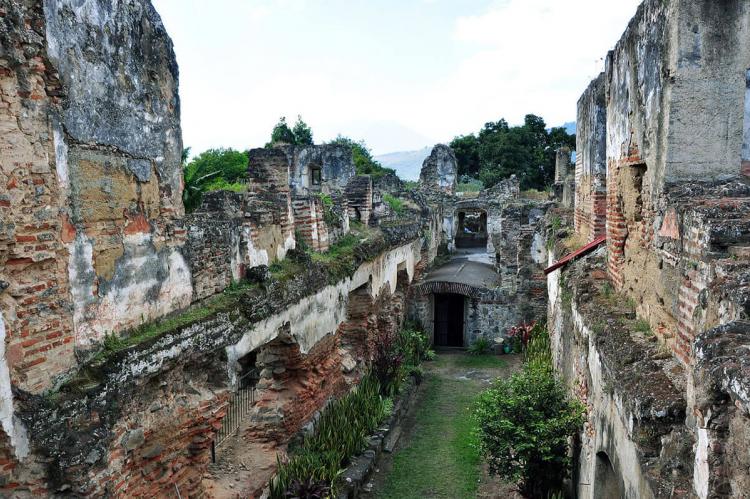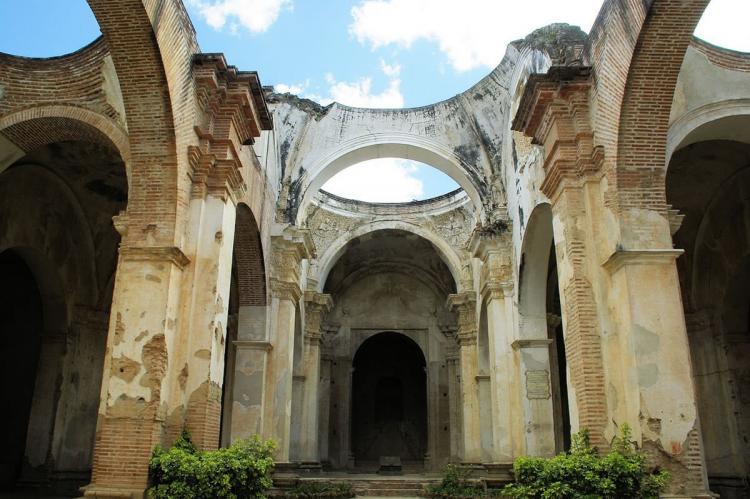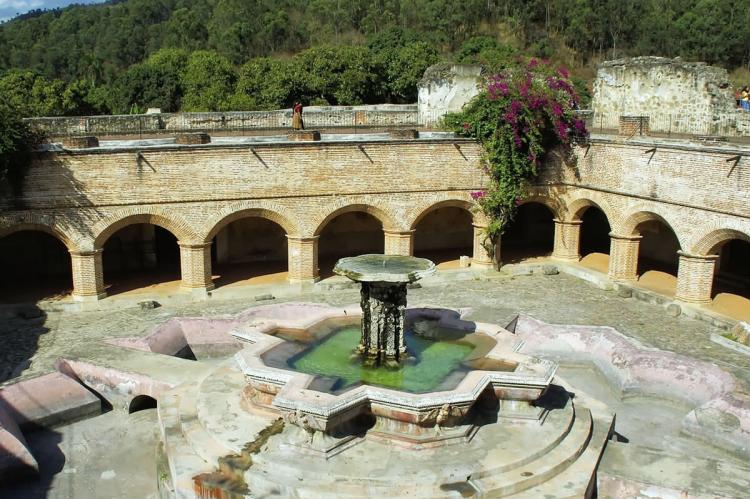Antigua Guatemala: Preserving Colonial Majesty Amidst Nature's Trials
Enveloped in a landscape of rolling hills and volcanic peaks, the historic city of Antigua Guatemala beckons with its rich cultural heritage, vibrant streets, and magnificent architecture. The city is a testament to the grandeur of colonial architecture and resilience in the face of natural calamities.
Antigua Guatemala: Preserving Colonial Majesty Amidst Nature's Trials
Nestled in the southern reaches of the Central Highlands of Guatemala, Antigua Guatemala, affectionately known as "Antigua" or "La Antigua," stands as a timeless testament to the grandeur of colonial architecture and the resilience of its inhabitants in the face of natural calamities. Enveloped in a landscape of rolling hills and volcanic peaks, this historic city beckons visitors with its rich cultural heritage, vibrant streets, and magnificent architecture.
Foundations in Conquest and Catastrophe
The story of Antigua Guatemala is a saga of conquest, resilience, and rebirth that unfolds against the backdrop of Guatemala's rugged highlands. Founded in 1524 by the Spanish conquistador Pedro de Alvarado, the city emerged as Santiago de los Caballeros, the capital of the Captaincy-General of Guatemala, marking the dawn of a new era in the region's history.
Perched at an altitude of approximately 1,530 meters (5,000 feet) in an earthquake-prone region, Antigua's early years were characterized by a precarious balance between promise and peril. The city's strategic location amidst lush valleys and towering peaks made it a coveted prize for Spanish colonizers seeking to establish dominion over the New World. However, the volatile forces of nature, coupled with the resistance of indigenous populations, posed formidable challenges to their ambitions.
In 1527, Antigua suffered a devastating blow when an indigenous uprising engulfed the city in flames, reducing much of it to smoldering ruins. The destructive fire laid waste to homes, churches, and public buildings, leaving a trail of destruction in its wake. Yet, from the ashes of adversity, the spirit of resilience emerged as the inhabitants of Antigua rallied together to rebuild their shattered city from the ground up.
However, the city's trials were far from over. In 1541, a series of powerful earthquakes, followed by a catastrophic avalanche, unleashed nature's fury again, burying Antigua beneath a blanket of rubble and debris. Despite the staggering scale of destruction, the indomitable spirit of its people prevailed as they embarked on a quest to forge a new future amidst the ruins of the old.
In 1543, Antigua rose from the ashes like a phoenix as its inhabitants relocated to the fertile Valley of Panchoy or Pacán, establishing a new settlement that would soon blossom into a vibrant Spanish colonial hub. The city, blessed with fertile soils, abundant water sources, and a strategic location along trade routes, quickly became a beacon of prosperity and opportunity in the New World.
The relocation of Antigua marked the beginning of a new chapter in its storied history, as it emerged as a cultural, economic, and political powerhouse in the region. Despite the ever-present specter of natural disasters, including floods, volcanic eruptions, and seismic tremors, Antigua persevered, its resilience tempered by the crucible of adversity.
Cultural Epicenter and Architectural Marvel
Throughout the 17th and 18th centuries, Antigua Guatemala flourished as a bustling cultural epicenter, a vibrant hub of commerce, creativity, and religious fervor that captivated the imagination of travelers from near and far. Nestled amidst the verdant landscapes of Guatemala's Central Highlands, the city's strategic location at the crossroads of trade routes and colonial power made it a beacon of prosperity and innovation in the New World.
Antigua's rise to prominence as a cultural epicenter can be traced back to its pivotal role in exporting religious imagery and artifacts to the far corners of the American continent and Spain. As the heart of Guatemala's burgeoning colonial economy, the city became a veritable treasure trove of religious art and craftsmanship, with skilled artisans producing exquisite sculptures, paintings, and religious icons that adorned churches and cathedrals across the globe.
The city's architectural marvels, with their intricate facades and ornate interiors, are enduring testaments to Antigua's cultural and artistic legacy. Despite the ravages of time and the relentless onslaught of natural disasters, including floods, volcanic eruptions, and severe earthquakes, Antigua's architectural treasures have stood the test of time, a testament to the resilience and ingenuity of its inhabitants.
At the heart of Antigua's enduring allure lies its meticulously planned grid layout, a masterpiece of urban design that remains one of Latin America's earliest and most outstanding examples of city planning. Conceived in 1543 and inspired by the principles of the Italian Renaissance, the city's grid pattern of north-south and east-west streets forms the backbone of its urban landscape, providing a sense of order and symmetry that continues to captivate visitors today.
The straight lines and geometric precision of Antigua's streetscapes serve as a tangible reminder of the city's colonial origins, preserving the essence of its 16th-century heritage for future generations to cherish and admire. As visitors meander through the city's labyrinthine streets, they are transported back to an era of exploration, discovery, and cultural exchange, where the spirit of adventure and the pursuit of knowledge reign supreme.
Magnificent Colonial Architecture
In Antigua Guatemala, each cobblestone street tells a story of centuries past. It is adorned with a breathtaking array of civil, religious, and civic buildings that testify to the city's rich colonial heritage. These architectural marvels, dating back to the 17th and 18th centuries, offer a glimpse into a bygone era of artistic splendor and engineering ingenuity, showcasing the region's distinctive stylistic variation, Barroco antigueño.
The streets of Antigua serve as open-air museums, inviting visitors to marvel at the grandeur of its colonial architecture. Each building is a masterpiece in its own right, reflecting the era's cultural, religious, and economic significance of the era. From imposing cathedrals to serene convents, Antigua's architectural gems captivate the imagination and transport visitors to an age of exploration and conquest.
Among the city's most renowned architectural treasures is the majestic Palace of the Captains General, a symbol of Spanish authority and colonial power. This grand edifice, with its elegant façade and ornate interiors, served as the seat of government for the Captaincy-General of Guatemala, embodying the opulence and prestige of the Spanish colonial administration.
The Casa de la Moneda, or Mint House, is a testament to Antigua's economic prosperity during the colonial period. With its intricate Baroque façade and imposing bell tower, this imposing structure once housed the royal mint, where precious metals mined from the region were minted into coins for trade and commerce.
The Cathedral of Antigua, with its imposing twin bell towers and intricately carved façade, is a masterpiece of colonial architecture. Built on the site of a former cathedral destroyed by earthquakes, this iconic landmark symbolizes the city's resilience and enduring faith.
The Universidad de San Carlos, one of the oldest universities in the Americas, is another architectural gem that graces the streets of Antigua. Founded in 1676, this prestigious institution shaped colonial Guatemala's intellectual and cultural landscape, nurturing generations of scholars and thinkers.
Las Capuchinas, La Merced, and Santa Clara are among the city's many churches and convents that showcase the colonial period's exquisite craftsmanship and religious devotion. These sacred edifices, with their elaborately carved altars, ornate chapels, and serene courtyards, offer a glimpse into the spiritual life of colonial Antigua.
Religious Legacy and Cultural Influence
In Antigua Guatemala, the echoes of faith reverberate through every cobblestone street and shadowy cloister, as the city's religious legacy intertwines seamlessly with its rich cultural tapestry. From the imposing facades of cathedrals to the serene sanctuaries of monasteries, Antigua's sacred edifices stand as enduring symbols of devotion and spiritual resilience, offering visitors a glimpse into the profound interplay between faith and architecture that defines the city's identity.
At the heart of Antigua's religious legacy lies the Catholic Church, whose influence permeates every aspect of daily life in the city. From the crack of dawn to the fading light of dusk, the tolling of church bells echoes across the rooftops, calling the faithful to prayer and contemplation. Amidst the hustle and bustle of daily life, the churches and monasteries of Antigua serve as sanctuaries of solace and reflection, offering respite from the chaos of the outside world.
The Cathedral of Antigua, with its majestic twin bell towers and intricately carved façade, stands as the crowning jewel of the city's religious heritage. Built on the site of a former cathedral destroyed by earthquakes, this iconic landmark serves as a testament to Antigua's enduring faith and unwavering resilience in the face of adversity. Within its hallowed halls, visitors can marvel at the exquisite craftsmanship of its altars and chapels, each adorned with ornate carvings and gilded icons that speak to the transcendent beauty of divine worship.
Yet, the Cathedral is just one of many religious treasures that grace the streets of Antigua. From the graceful arches of La Merced to the tranquil cloisters of Las Capuchinas, each church and monastery bears witness to the city's rich spiritual heritage and cultural diversity. Whether exploring the labyrinthine corridors of Santa Clara or admiring the intricate stonework of San Francisco, visitors are transported back to an era of fervent piety and religious devotion.
Beyond their architectural splendor, Antigua's religious structures serve as living repositories of history and tradition, preserving the stories of saints and sinners, martyrs and miracles that have shaped the city's collective consciousness for centuries. As visitors wander through the hallowed halls and sun-dappled courtyards, they are enveloped in reverence and awe, encountering the sacred and the sublime in equal measure.
Conclusion: A Tapestry of Heritage and Tradition
In conclusion, Antigua Guatemala emerges as a vibrant tapestry woven with the threads of history, culture, and resilience, each strand contributing to the rich fabric of its identity. From its humble beginnings to its enduring legacy, the city serves as a testament to Guatemala's colonial heritage and the indomitable spirit of its people.
As visitors traverse the labyrinthine streets and verdant plazas of Antigua, they embark on a journey through time, immersing themselves in the sights, sounds, and stories of centuries past. The city's tumultuous history, marked by conquest, catastrophe, and cultural exchange, unfolds before their eyes, offering a window into the complexities of Guatemala's colonial past.
At every turn, Antigua reveals its architectural treasures, from the majestic cathedrals to the quaint chapels, each edifice bearing witness to its builders' artistic prowess and religious fervor of its builders. The city's cobblestone streets, lined with colorful facades and centuries-old churches, evoke a sense of wonder and awe, inviting visitors to contemplate the enduring legacy of its colonial heritage.
Yet, Antigua is more than just a city frozen in time; it is a vibrant tapestry of tradition and innovation, where the past converges with the present in a harmonious blend of old and new. Amidst the ancient ruins and historic landmarks, modern cafes, galleries, and boutiques breathe new life into the city, infusing it with vitality and creativity that belies its age.
The city's timeless beauty takes on a new significance as the sun sets over Antigua's rooftops and the shadows lengthen across its plazas, the city's timeless beauty takes on a new significance. It becomes a place of memory and reflection and a beacon of hope for future generations. In the heart of Antigua Guatemala, amidst the echoes of centuries past, lies the promise of a brighter tomorrow—a tomorrow shaped by the enduring values of resilience, community, and cultural heritage.
In essence, Antigua Guatemala is more than just a destination; it is a living testament to the enduring spirit of Guatemala's colonial legacy—a legacy built on the foundations of heritage, tradition, and the unyielding resilience of its people. As visitors bid farewell to the city and carry its memories with them, they become part of its ongoing story, adding new chapters to its ever-evolving narrative of discovery and rediscovery.
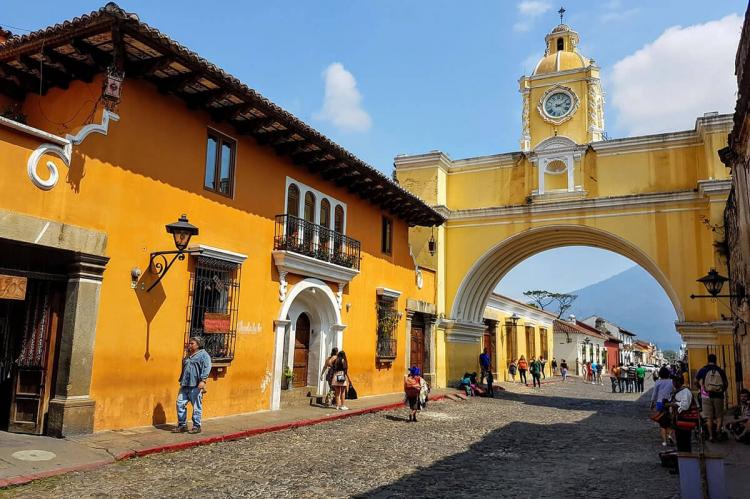
![Hermano Pedro's Hospital, Antigua Guatemala By Cbl62 (Own work) [CC BY 3.0 (http://creativecommons.org/licenses/by/3.0)], via Wikimedia Commons Hermano Pedro's Hospital, Antigua Guatemala](/sites/default/files/styles/large/public/hermano_pedro_hospital_antigua_guatemala.jpg?itok=XkzUBt7Y)
